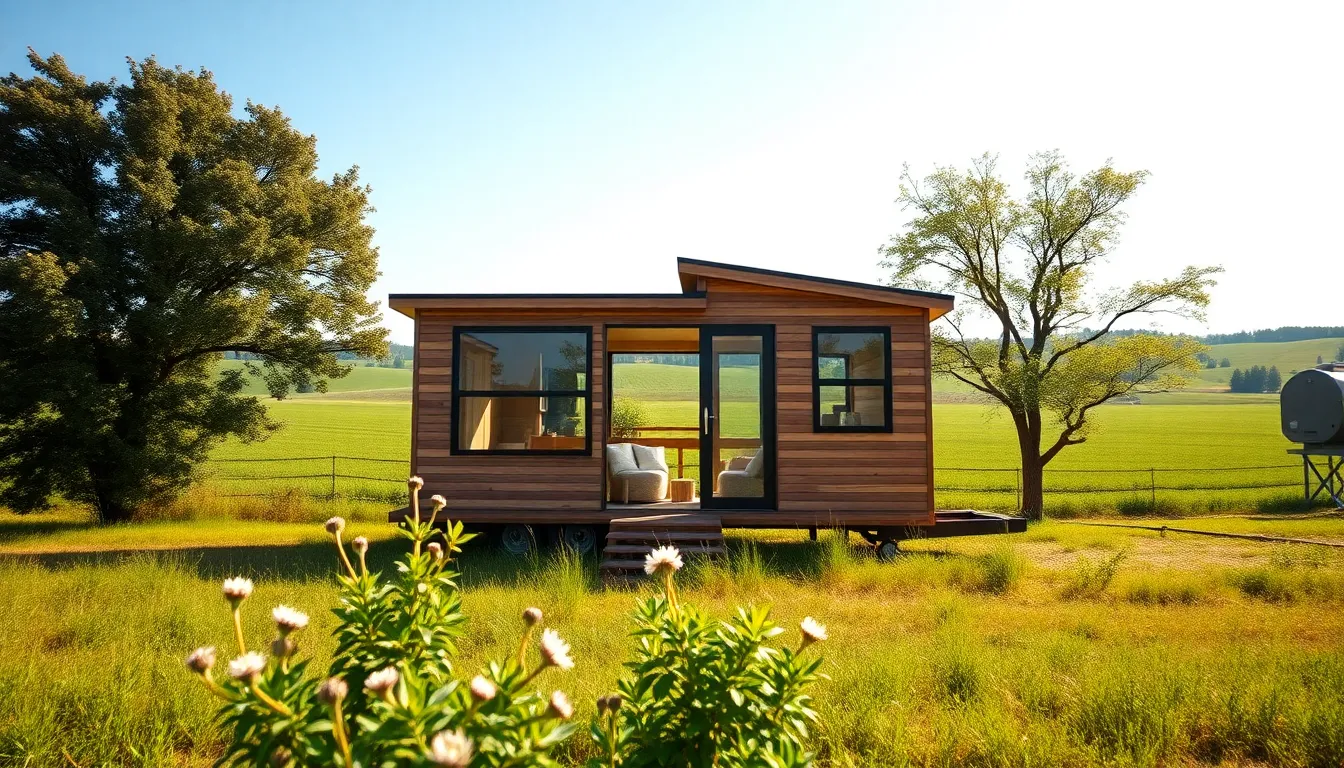In a land known for sprawling estates and luxurious lifestyles, tiny homes in California are quietly carving out a niche for those who dare to think small. Imagine trading your oversized mortgage for a cozy abode that’s as cute as it is functional. Tiny homes aren’t just for minimalists or hipsters: they are revolutionizing how we think about space, sustainability, and modern living. So, what’s the deal with these pint-sized palaces? Let’s jump into the world of tiny homes, where compact living meets innovative design, all wrapped up in an enviable Californian lifestyle.
Table of Contents
ToggleWhat Are Tiny Homes?

Tiny homes are exactly what they sound like: small living spaces that typically range from 100 to 400 square feet. These efficient abodes come in various styles, from simple trailers to custom-built cabins, allowing homeowners to express their personalities without taking over the neighborhood. One might think they would miss out on the grandeur of larger homes, but tiny homes often incorporate smart design features that maximize every inch. Multi-functional furniture, creative storage solutions, and innovative layouts mean you can have all the comforts of home but in a fraction of the space. It’s a trend that’s not just practical but also liberating.
The Tiny Home Movement
The tiny home movement gained traction in the early 2000s, fueled by a growing desire for minimalist lifestyles and financial freedom. It offers a significant departure from the traditional American dream of owning a big house filled with stuff, many enthusiasts relish the challenge of living with less. Whether it’s for financial independence, environmental concerns, or simply the joy of simplicity, people are flocking to tiny homes like bees to honey.
Benefits of Living in a Tiny Home
The perks of downsizing are numerous and oh-so-tempting. Firstly, there’s the financial aspect. Tiny homes are generally more affordable than their larger counterparts, which means lower mortgage payments or the possibility of purchasing one outright. Imagine waking up every day knowing you own your home without a bank looming over your head.
Beyond finances, tiny homes encourage a more intentional lifestyle. With limited space, residents often find themselves focusing on what truly matters, relationships, experiences, and personal growth. Besides, tiny living promotes organization and reduces clutter, which can lead to less stress. Who wouldn’t want that?
Eco-Friendly Living
Another key benefit is the environmental impact. Tiny homes typically consume less energy, require fewer materials, and produce less waste. Many owners choose to incorporate sustainable practices like solar panels or rainwater collection systems, all contributing to a smaller carbon footprint. In a state where nature is revered, this commitment to sustainability resonates with many Californians.
Tiny Home Communities in California
Across California, tiny home communities are popping up like wildflowers in spring. These open neighborhoods foster a sense of camaraderie among residents, encouraging interaction in ways traditional neighborhoods often don’t. Places like the “Tiny House Village” in Los Angeles or “Eco Cottages” in San Diego bring together like-minded individuals who share a passion for small living.
What You’ll Find in These Communities
Residents in these communities enjoy not just homes but often shared amenities, such as gardens, workshops, and communal areas for socializing. Living in a tight-knit community can lead to lifelong friendships and support networks that echo the warm spirit of California.
Building Regulations and Laws
It’s not all sunshine and rainbows, but. Navigating the building regulations and laws surrounding tiny homes in California can feel like trying to find a needle in a haystack. Given that tiny homes often blur the lines between mobile dwellings and permanent residences, state and local laws vary widely.
Essential Considerations
Before diving into tiny home ownership, it’s crucial to familiarize oneself with zoning laws, building codes, and land use regulations. Some areas may approve tiny homes as accessory dwelling units (ADUs), while others may not allow them at all. Hence, prospective tiny homeowners must do their due diligence, ensuring their dream abode won’t end up becoming a costly headache. Working with local authorities and possibly seeking legal advice is advisable to navigate these waters seamlessly.
Sustainable Living and Environmental Impact
Sustainable living is more than just a buzzword for tiny home enthusiasts. It’s a lifestyle choice. By living in smaller, simpler homes, individuals can reduce their reliance on natural resources while creating an eco-friendlier environment. Tiny homes often feature energy-efficient designs, using sustainable materials and innovative technologies to lower energy consumption and waste production.
For instance, many tiny homes are built with locally-sourced materials, minimizing transportation emissions. Rainwater catchment systems and composting toilets can also significantly enhance sustainability. Such features make tiny homes not just an alternative but a responsible choice for environmentally-conscious Californians, contributing positively to the state’s already iconic landscapes.
The Future of Tiny Homes in California
Looking ahead, the future of tiny homes in California appears bright. As housing costs continue to rise, many Californians are considering alternatives to traditional housing solutions. The blending of tiny homes with eco-friendly designs and communal living spaces will likely further gain traction, appealing to those seeking affordability without compromising lifestyle quality.
Meeting Demand
Besides, the demand for tiny homes shows no signs of slowing. Local governments may begin to carry out more supportive policies to accommodate the tiny home movement, making it easier for residents to find their ideal compact dwelling. With changing attitudes towards ownership and living spaces, tiny homes could soon become a staple in California’s diverse housing market.








